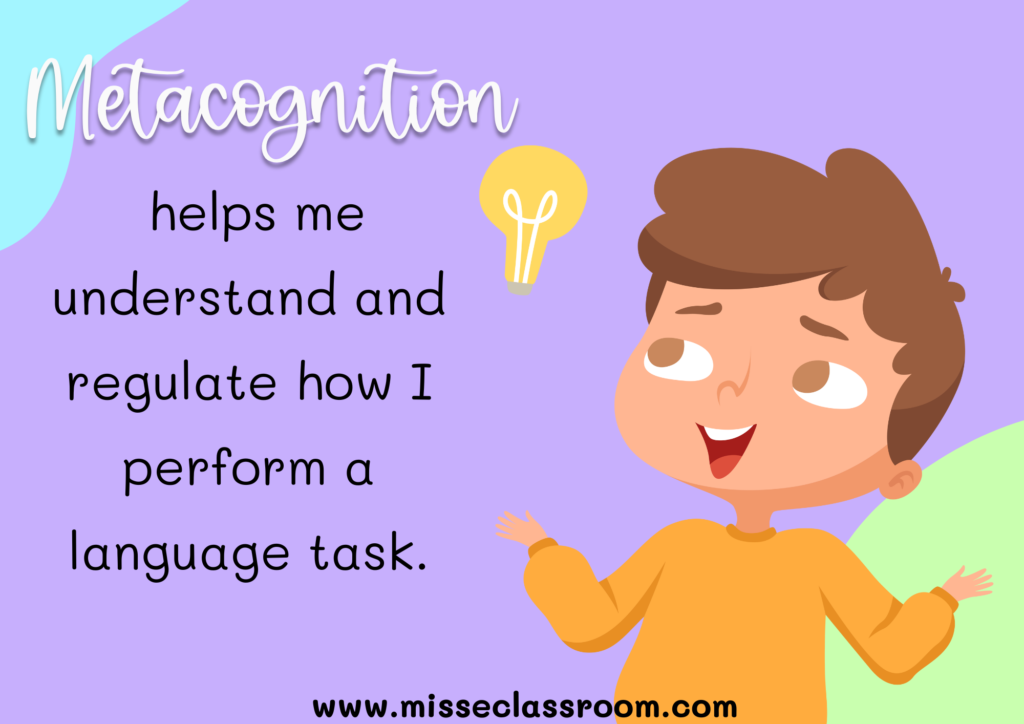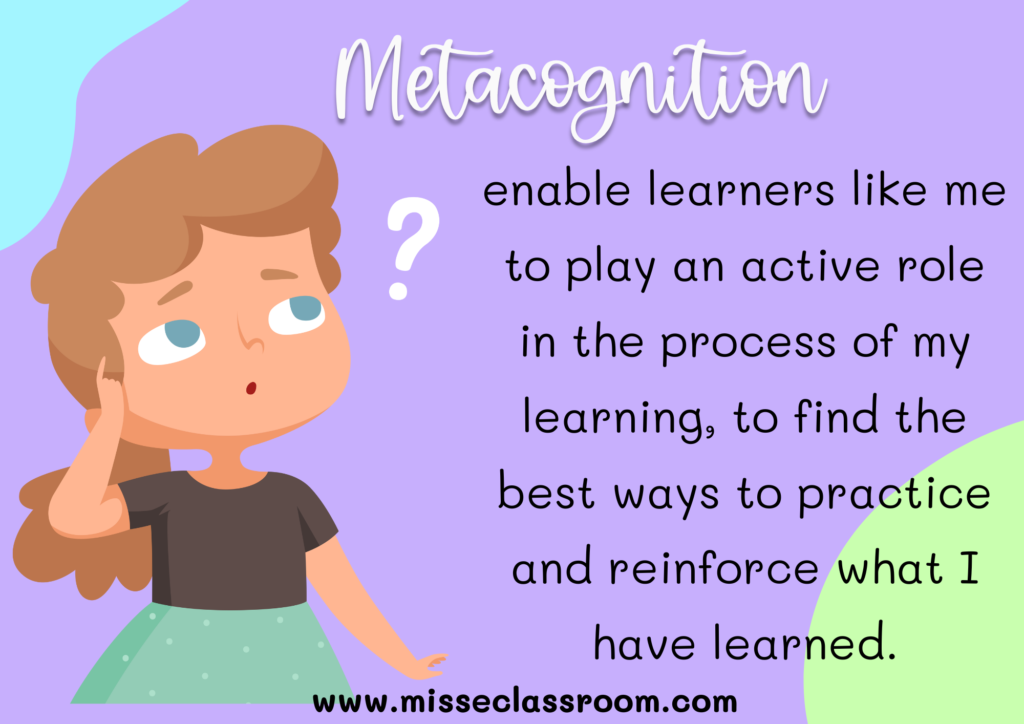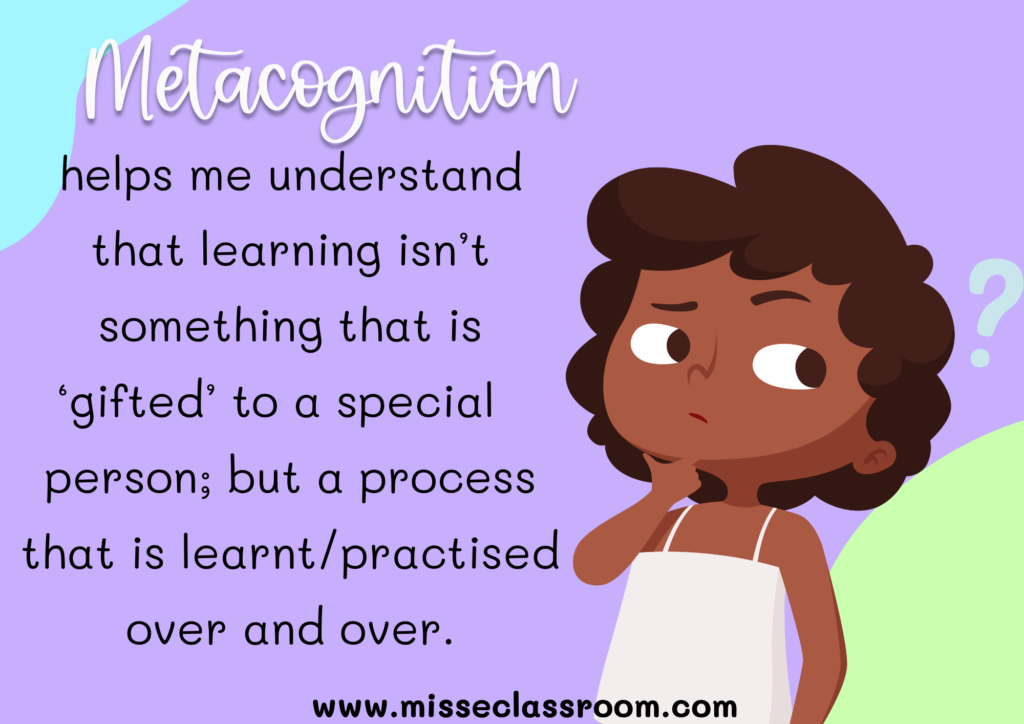Metacognition is a concept of cognitive psychology that “focuses on the active participation of the individual in his or her thinking process” (Stewart & Landine, 1995, p. 17) Metacognitive awareness means being aware of how you think. In the ELT classroom, it means being aware of how you learn. Developing these skills is an important part of helping learners become more effective and autonomous. If learners are conscious of how they learn then they can identify the most effective ways of doing so.

Metacognition is critical for the learning process. It’s teaching the why, not just the how. It helps students to be active readers and critical thinkers. What’s more, it increases confidence and empowers students to transfer the concepts they learn in the classroom to other disciplines and to real life. Students can coast throughout their academic journey, detached and uninterested, and still receive passable grades. However, their relationship with learning will be forever tarnished. If they are taught to understand and regulate their own thinking, your students will carry these benefits far into their futures.
Why is this important? When equipped with metacognitive thinking skills, students of all ages can become flexible, self-motivated, and creative learners. This is particularly effective for children who may find some tasks challenging, as it can prepare them to independently organise their own learning. The fostering of metacognition will allow students to become more reflective and intrinsically motivated to improve.

So, how can you introduce metacognitive thinking skills to your English language classroom?
The metacognitive teaching process asks teachers to draw students’ attention to not just the completion of the task but the thinking processes that go with it. Once underway the teacher facilitates a midway reflection, suggesting how far you think students might have got in the task and some thinking stems to monitor their progress e.g. I am successful because… I’m confused by… My next steps are… etc.
Let your students know it’s okay to be confused
Learning another language is far from easy. Students will often be confused and, at times, frustrated. And that’s okay. The act of being unsure is an indicator of self-awareness. Integrating the presence of confusion in your learning environment may act as a catalyst for metacognitive thinking. Post questions at the end of your lessons, such as: ‘what did you find most confusing today?’ This will let them know that confusion is a vital part of the learning process.

Metacognitive talk
When approaching a new task, talk through your own thought process when modelling expectations. This sets a good standard for your language learners. Promote them to talk out loud often, as this can help their focus and cognitive processing. As the teacher, you can demonstrate by using questions such as: ‘What do I know about this vocabulary?’ before engaging with the task. Talking out loud, especially in the language classroom, should never be seen as a bad thing!
Create playful, investigative situations
To promote an environment of metacognition, invite situations where your students can play. Stimulate their curiosity by having them investigate and ask questions about their findings. If you find that your students have a particular interest in a certain area, use this to your advantage. Build lessons around that interest and consider new ways of teaching and challenging the children to reinforce their knowledge.
Ultimately, you want a class full of metacognitive thinkers. When teaching a language, the promotion of this mindset will set them up in good stead going forward, as their intrinsic desire to learn will be bolstered by valuable, practical tools. And you will be the one to have provided them
